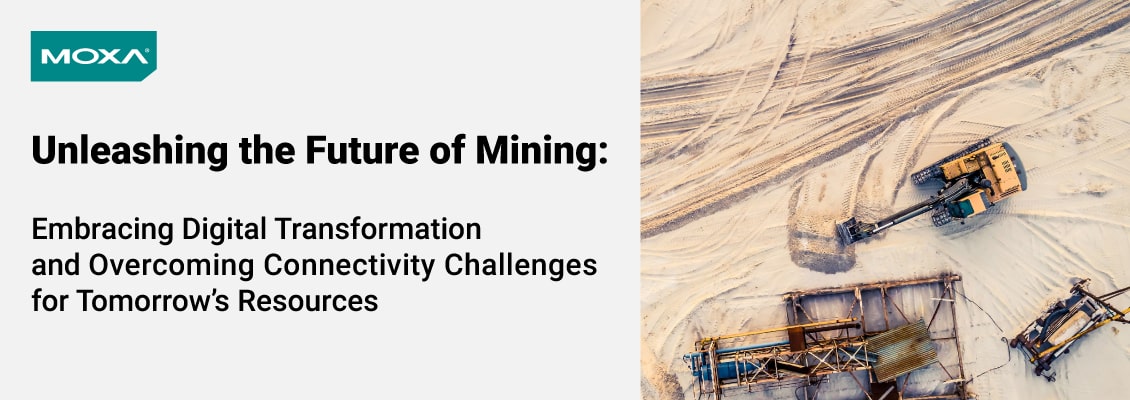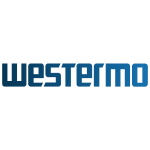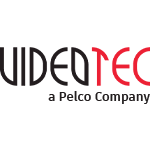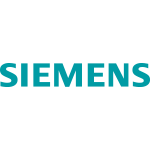
The global demand for critical minerals in support of the clean energy transition is on the rise, with the World Bank forecasting a staggering 500% surge in production by 2050. This projection translates into unprecedented growth for the mining industry. However, this growth is accompanied by a multitude of both internal and external challenges.
Internally, the scarcity of skilled labor has compelled mining companies to pivot toward automation and digitalization to enhance their operational efficiencies. Externally, the industry is subject to the capricious whims of global resource prices, necessitating a rapid and adaptable response to meet the ever-shifting demands of mineral extraction. In response to these ceaseless changes, mining operations proactively embrace digital transformation. They're harnessing advanced technologies, including automation, unmanned systems, and artificial intelligence for image recognition, all in the pursuit of amplified operational efficiency and safety.
Pioneering Technologies for Enhanced Operations
A case in point is a Canadian iron mine, which has introduced automated mining vehicles and smart shovels featuring advanced X-ray fluorescence (XRF) sensors and wireless connectivity. These innovations have significantly expedited the on-site ore identification and sorting processes. The image recognition system plays a pivotal role in guiding the vehicles and dispatching them based on ore sorting results, elevating operational efficiency. Concurrently, the mining site is leveraging Internet of Things (IoT) technology to connect a diverse array of equipment and vehicles, enabling seamless data sharing and collaboration. This real-time access to critical data empowers mining vehicle fleets, ensuring the seamless execution of their tasks within the mining field. Furthermore, the deployment of robotic dogs for terrain reconnaissance in a South African gold mine aids in planning appropriate mining paths, thereby mitigating risks and ensuring safety.
Embracing Digital Transformation. What About Connectivity Across Mine Sites?
In the era of digital transformation, the transmission and analysis of extensive data volumes between equipment and systems are imperative. However, ensuring seamless connectivity between humans and machines and interconnecting machines within the challenging minefield environment presents a unique set of challenges. Here, we address five pivotal communication challenges that modern mining operations must give priority:
Issue 1: Ensuring Stable Connectivity
Sustaining reliable mining operations hinges on the presence of a stable communication network. Nevertheless, harsh minefield conditions, featuring dust, extreme temperatures, vibrations, and signal interference, pose formidable hurdles. To surmount these challenges, robust connectivity, boasting swift failover redundancy, seamless roaming capabilities, and dependable products, is indispensable. This approach minimizes latent maintenance costs.
Issue 2: Seamlessly Integrating Information
Mining operations necessitate the integration of multiple subsystems for effective collaboration. However, the diverse equipment and sensors used in mining often operate on different protocols such as Modbus, MQTT, and ProfiNet. Consequently, the seamless integration of communication systems is fundamental for streamlined data acquisition, data sharing, and system interoperability.
Issue 3: Visualizing Communication Networks
In vast mining sites with limited personnel, guaranteeing uninterrupted communication for thousands of connected devices presents a formidable challenge. To overcome this, modern mining operations have adopted visualization techniques enabling remote real-time monitoring and management of wired and wireless communication devices. This approach minimizes malfunctions, improves equipment maintenance, and enhances operational efficiency.
Issue 4: Establishing Flexible Architecture
Scalability is the linchpin for accommodating future growth demands. As the number of mining equipment and imaging devices escalates, the communication infrastructure must be expandable to meet burgeoning requirements. This entails reserving sufficient bandwidth, evaluating network expansion feasibility, instituting efficient tiered management, and integrating edge and cloud technologies to ensure future scalability.
Issue 5: Network and Cybersecurity
Interconnecting devices and transmitting data from the field to remote central control centers exposes mining companies to cybersecurity threats. Addressing security concerns across the entire spectrum, from the control room to the OT field site, is crucial. This involves safeguarding the network, fortifying cybersecurity capabilities, and employing secure devices in line with the IEC 62443 standard.
The Solution
The equipment manufacturer installed Moxa’s compact-sized industrial-grade AWK-1137C clients with an anti-vibration design on the drilling rigs and mining trucks to be able to remotely access them from the control room. The AWK-1137C clients uplink large volumes of data and live video streams from each of these driverless vehicles to the operator station through the wireless access network. AWK-4131A APs were installed along the tunnel walls to provide maximum wireless coverage for the AWK-1137C clients. AWK-4131A APs provide 802.11n MIMO coverage on standard 2.4 GHz, 5 GHz, and 5 GHz DFS channels to maximize radio performance and reduce interference caused by the hard rock walls of the mines.

The key highlights of Moxa’s wireless solution are:
- Turbo Roaming’s millisecond-level handoff times, coupled with 802.11n MIMO and 5 GHz DFS support, ensure seamless live video streaming from the vehicles while they are on the move
- Master/slave connections enable transparent PROFINET communication
- Access points with IP68-rated weatherproof housing and -40 to 75°C operating temperatures are suitable for outdoor applications
- Anti-vibration design that meets the requirements of the IEC 60068-2-6 standard protects against interference caused by mining activities
In Conclusion
The mining industry's pursuit of digital transformation is not without its challenges. Nevertheless, by leveraging the power of technology and addressing communication hurdles head-on, modern mining operations can significantly enhance their efficiency and safety. Through this transformative process, the untapped potential of tomorrow's resources can be fully realized, ushering in a new era of mining excellence.
Featured Products

AWK-4131A Series
Outdoor industrial IEEE 802.11a/b/g/n wireless
AP/bridge/client:
- 2x2 MIMO 802.11a/b/g/n AP/bridge/client
- Millisecond-level Client-based Turbo Roaming
- Easy setup and deployment with AeroMag
- Wireless redundancy with AeroLink Protection
- Easy network setup with Network Address
Translation (NAT) - Rugged industrial design with integrated antenna
and power isolation - IP68-rated weatherproof housing designed for outdoor
applications and a -40 to 75°C wide operating temperature
range - Avoid wireless congestion with 5 GHz DFS channel support

AWK-1137C Series
Entry-level industrial 802.11a/b/g/n wireless client:
- IEEE 802.11a/b/g/n compliant client
- Comprehensive interfaces with one serial port and
two Ethernet LAN ports - Millisecond-level Client-based Turbo Roaming
- Easy setup and deployment with AeroMag
- 2x2 MIMO future-proof technology
- Easy network setup with Network Address Translation (NAT)
- Integrated robust antenna and power isolation
- Anti-vibration design
- Compact size for your industrial applications
*For any further information please contact us via info@rockford-qatar.com.





-150x150.png)


